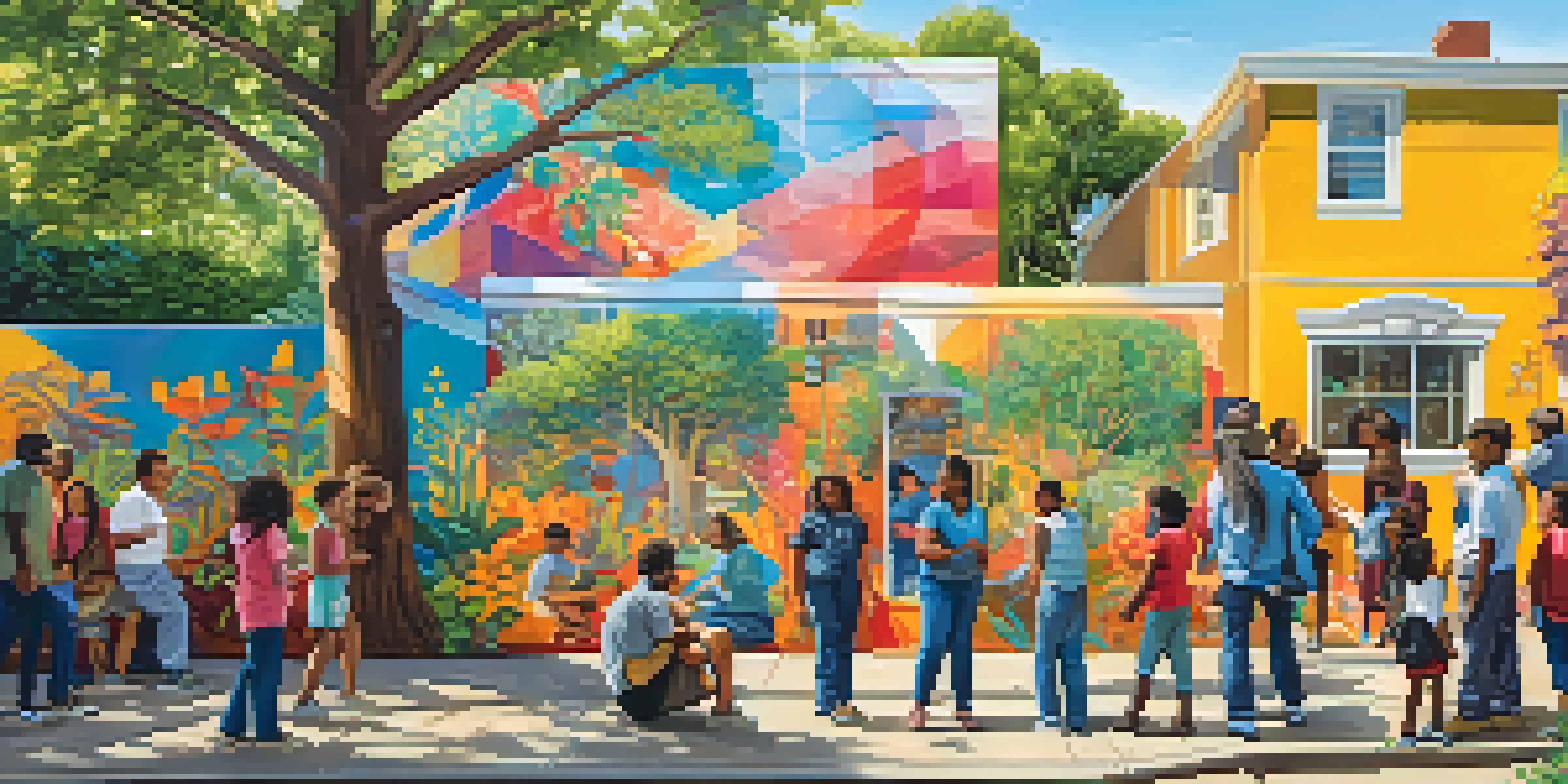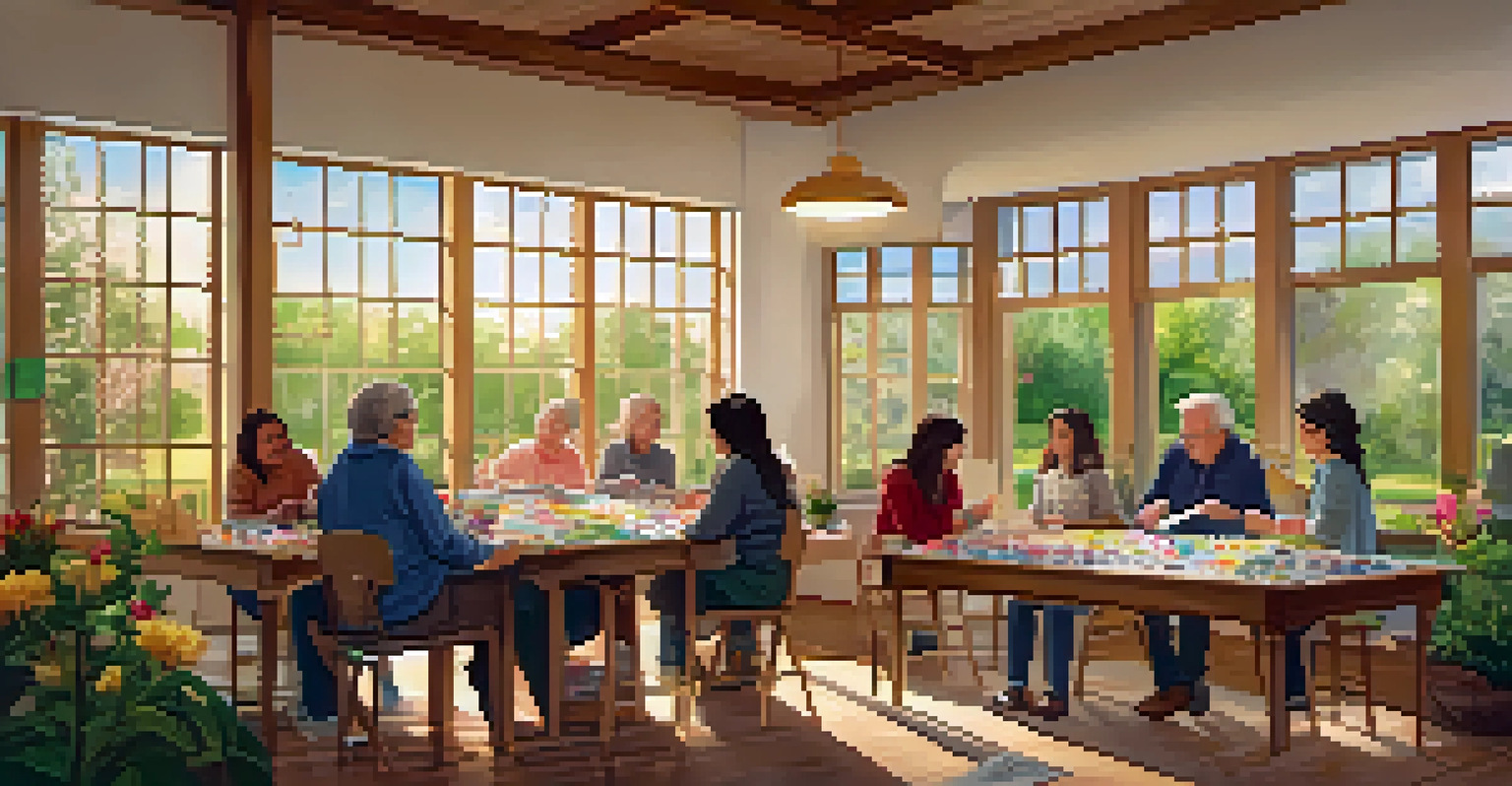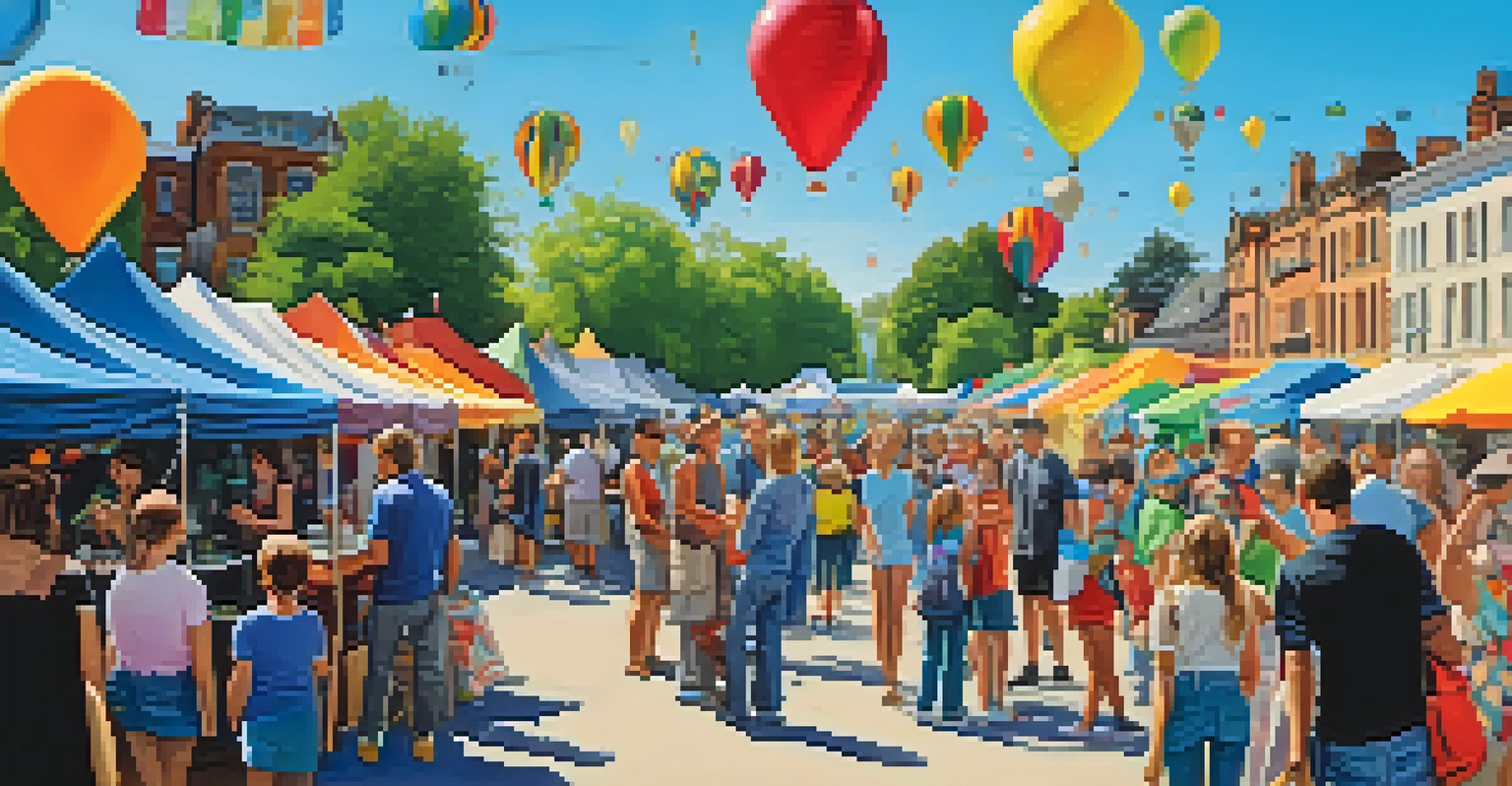The Role of Art in Community Development and Engagement

Art as a Catalyst for Community Connection
Art has a unique ability to bring people together, acting as a catalyst for connection within communities. It creates shared experiences that can break down barriers, allowing individuals from diverse backgrounds to engage with one another. Whether it’s a mural project or a community theater performance, these artistic endeavors foster a sense of belonging and shared identity.
Art is the most beautiful of all lies; it is the most beautiful of all truths.
Consider a local art fair where artists showcase their work; it not only highlights local talent but also invites community members to interact, share stories, and appreciate each other's perspectives. This interaction can lead to lasting relationships and a stronger community fabric. Art serves as a bridge, connecting people through creativity and shared experiences.
Ultimately, the connections formed through art can lead to increased civic engagement, as individuals feel more invested in their community. When people come together to create or appreciate art, they often become more active in other community initiatives, enhancing overall community development.
Enhancing Community Identity Through Artistic Expression
Art plays a crucial role in shaping and enhancing a community's identity. It reflects the culture, history, and values of the people who live there, often serving as a visual representation of the community's unique story. From public sculptures to local festivals, these artistic expressions can instill pride among residents.

Take, for example, a community mural that depicts significant historical events or local heroes. Such artwork not only beautifies the neighborhood but also educates both residents and visitors about the community's heritage. This shared understanding fosters a sense of belonging and connection to the place.
Art Unites Communities
Art fosters connection and shared experiences among diverse individuals, strengthening community bonds.
When communities embrace their artistic identity, they can attract tourism and economic opportunities, further supporting local development. This symbiotic relationship between art and identity creates a vibrant community atmosphere that encourages growth and engagement.
Art as a Tool for Social Change and Advocacy
Art is often a powerful tool for social change, giving voice to those who may feel unheard. Artists use their work to address important social issues, sparking conversations and inspiring action within the community. This form of advocacy can take many shapes, from provocative street art to poignant performances that challenge the status quo.
Creativity takes courage.
For instance, a community theater group might stage plays that highlight local social issues, encouraging audiences to reflect and engage in dialogue. Such artistic endeavors not only raise awareness but can also mobilize community members to advocate for change. When art challenges perceptions, it can inspire collective action.
By using art as a medium for advocacy, communities can rally around important causes, fostering unity and purpose. This powerful combination of creativity and activism can lead to significant improvements in social conditions, reinforcing the role of art in community development.
Fostering Economic Development Through the Arts
The arts can significantly contribute to economic development, creating jobs and stimulating local economies. Art installations, galleries, and performance venues not only attract visitors but also encourage spending in surrounding businesses. This influx of activity can revitalize neighborhoods and support local entrepreneurs.
Consider a small town that invests in arts infrastructure, such as a community theater or art center. These venues draw visitors for performances and events, leading to increased foot traffic in local shops and restaurants. This economic boost can be a game changer for struggling communities, proving that art is not just a cultural asset but an economic one as well.
Art Boosts Local Economies
Investing in the arts can revitalize neighborhoods and create economic opportunities through increased tourism and local spending.
Moreover, arts programs can provide job training and skills development, empowering community members to pursue careers in creative fields. By fostering a thriving arts scene, communities can tap into new economic opportunities while enhancing their cultural landscape.
Promoting Mental Health and Well-Being Through Art
Engaging with art can have profound effects on mental health and well-being, serving as an outlet for expression and creativity. Participating in or creating art provides individuals with a sense of accomplishment and can help reduce stress, anxiety, and depression. Many community art programs offer therapeutic benefits that promote overall mental wellness.
For instance, art therapy sessions in community centers allow individuals to explore their emotions through creative expression. These programs often foster a supportive environment where participants can connect with others facing similar challenges, creating a sense of community. The therapeutic aspect of art can be incredibly healing, both individually and collectively.
By prioritizing art as a means of enhancing mental health, communities can build resilience and improve the quality of life for their residents. This focus on well-being can lead to a more engaged and vibrant community, reinforcing the importance of art in everyday life.
Empowering Youth Through Artistic Opportunities
Art provides invaluable opportunities for youth, fostering creativity and self-expression. Engaging young people in artistic endeavors helps them develop critical thinking skills and enhances their confidence. Through community art programs, children and teens can explore their talents while also learning about teamwork and collaboration.
For example, a youth arts program might involve students in creating a mural that represents their community. Such projects not only teach valuable skills but also instill a sense of ownership and pride in the young participants. They learn that their voices matter, and their contributions can positively impact their surroundings.
Art Enhances Mental Wellness
Engaging with art provides therapeutic benefits that improve mental health and build community resilience.
Empowering youth through art also helps cultivate the next generation of artists and leaders. When young people are encouraged to express themselves creatively, they are more likely to become engaged citizens who contribute to their communities in meaningful ways.
Building Resilience Through Arts and Culture
Art and culture can play a pivotal role in building community resilience, especially in times of crisis. Communities that foster artistic expression are often better equipped to navigate challenges and recover from adversity. The arts provide a platform for processing experiences, whether it be through storytelling, music, or visual art.
Consider how communities affected by natural disasters often turn to art to heal and rebuild. Art installations can memorialize lost lives, while community performances can bring people together to share their stories and express their emotions. This collective healing process strengthens community bonds and fosters resilience.

By integrating arts and culture into community planning, leaders can enhance their community's ability to adapt and thrive. In times of uncertainty, art offers hope, connection, and a pathway toward recovery.